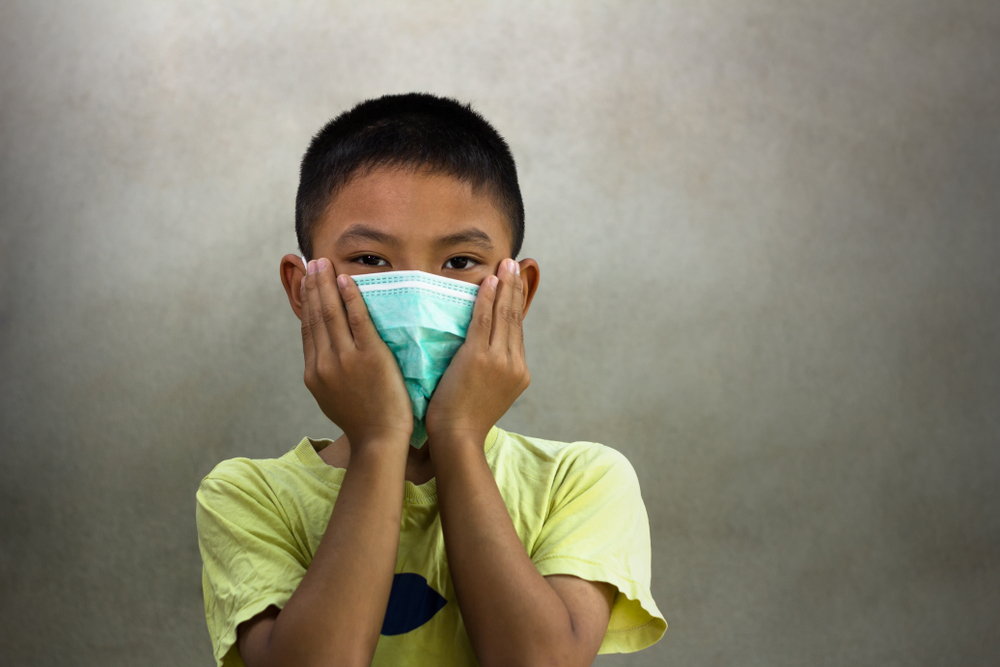Around this time every year our country is adversely affected by air pollution; the country’s notoriously poor air quality becomes even more toxic. The air quality in Delhi, according to a WHO survey of 1,600 world cities, is the worst (according to Reuters, the report has been rejected by Central Pollution Control Board of India).
Sadly, the death rate from chronic respiratory diseases and asthma is also very high in India. According to a study by Lancet, 350,000 children in India were reported asthmatic due to traffic-related pollution in 2015, second only to China. The exposure to increasing levels of outdoor and indoor air pollution contributed to over 1.2 million deaths in India in 2017 as per the reports by State of Global Air 2019.
In Delhi more than two million children have irreversible lung damage due to poor quality of the air. Further, research shows that pollution can lower a child’s immune system. It is during this time of the year that children take multiple days off from school and complain of excessive coughing, wheezing and breathlessness.
What is childhood asthma (CHA)?
It is a condition when the lungs and airways are easily inflamed when exposed to certain triggers, such as airborne pollen, dust and pollution. CHA also flares up with a cold or other respiratory infections. It can lead to annoying daily symptoms that interfere with play, sports, school and sleep. In some children, unmanaged asthma can cause dangerous asthma attacks. Asthma in children is a leading cause of…
1. Frequent visits to the emergency department.
2. Hospitalisation.
3. Missed school days.
4. Stunted growth.
Symptoms
Common childhood asthma signs and symptoms include…
1. Frequent, intermittent coughing.
2. A whistling or wheezing sound.
3. Shortness of breath.
4. Chest congestion or tightness.
5. Chest pain, particularly in younger children.
6. Trouble in sleeping because of shortness of breath.
7. Fatigue.
8. Delayed recovery or bronchitis after a respiratory infection.
9. Trouble breathing that may limit play or exercise.
Asthma signs and symptoms vary from child to child, and may get worse or better over time. While wheezing is most commonly associated with asthma, not all children with asthma wheeze. Your child may have only one sign or symptom, such as a lingering cough or chest congestion.
Apart from pollution and other environmental factors, asthma can also be triggered by dehydration, water contaminated with chlorine, emotional stress, drugs such as beta blockers, aspirin and non-steroidal anti-inflammatory drugs.
Risk factors
Factors that might increase your child’s likelihood of developing asthma include…
1. Exposure to tobacco smoke, including before birth.
2. Previous allergic reactions, including skin reactions, food allergies or hay fever (allergic rhinitis).
3. A family history of asthma or allergies.
4. Living in an area with high pollution.
5. Obesity.
6. Respiratory conditions such as a chronic runny or stuffy nose (rhinitis), inflamed sinuses (sinusitis) or pneumonia.
7. Heartburn (gastroesophageal reflux disease, or GERD).
Prevention
Strengthening the immune system and avoiding the asthma triggers are the best ways to prevent asthma attacks. One may take the following measures to prevent the occurrence of asthma...
1. Limit exposure to asthma triggers. Help your child avoid allergens and irritants that trigger asthma symptoms.
2. Don’t allow smoking around your child. Exposure to tobacco smoke during infancy is a strong risk factor for childhood asthma, as well as a common trigger of asthma attacks.
3. Encourage your child to be active. As long as your child’s asthma is well-controlled, regular physical activity can help the lungs to work more efficiently. The goal should be to lead a healthy life involving physical exercise. The activity should be able to control asthma symptoms for people with this condition. Some exercises are better than others with short voluntary intervals, such as walking and gymnastics. Swimming is the best exercise because it is performed in a warm, moist air environment.
4. Help your child maintain a healthy weight. Being overweight can worsen asthma symptoms, and it puts your child at risk of other health problems.
5. Keep heartburn under control. Acid reflux or severe heartburn (gastroesophageal reflux disease, or GERD) might worsen your child’s asthma symptoms. He or she might need over-the-counter or prescription medication to control acid reflux.
6. One must have a well-balanced diet low in trans fats and red meats and high in whole grains, fruits and vegetables. The goal should be to lead a healthy life.
Apart from these, take measures to cut down your contribution to the rising pollution in the country. We all have to do our bit to fight this out.
Shikha Prakash is an Ayurvedic consultant at Padaav Speciality Ayurvedic Treatment Centre, Dehradun, and a visiting consultant at AMRI Hospital, Dhakuria. You can reach her at Shikhaprakash@gmail.com or follow her on Facebook/Instagram at @vaidyadshikhaprakash

The Telegraph











